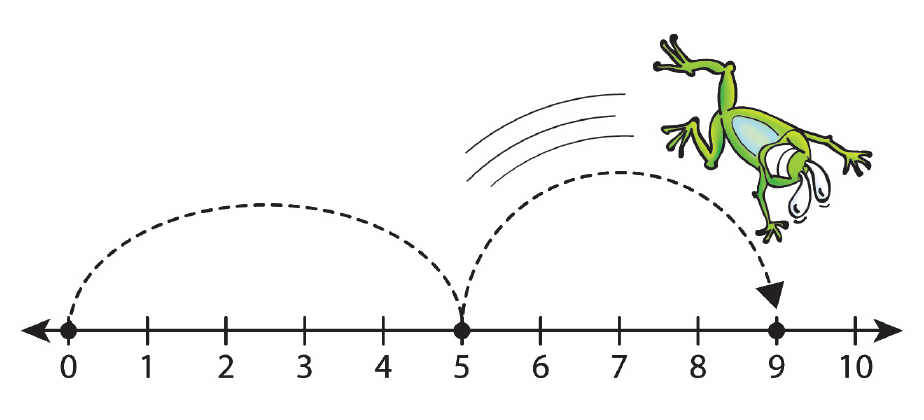Note:
Before the lesson begins, attach a long strip of masking tape to the
floor and draw a number line on it. If you prefer, you might draw a
chalk number line on the floor. Label the line from 0 to 12.
Inform the students that today they will use a number line to find
differences. Review addition on the number line by presenting an
addition sentence such as 5 + 4 = __, and have volunteers show how to
hop on the large number line to find the sum.

Then display a subtraction example such as 8 – 3 = __, and call
on a volunteer to tell a number story that would fit that subtraction
situation. Then ask: How can we find the difference using the number
line? Guide a volunteer to stand on the 8 and "hop" back three spaces
on the number line. Ask the volunteer to tell his or her present
position. [5] If this model is new to the students, you may wish to
encourage them to count backward as each hop is made. Ask for
volunteers to record what happened on the number line using both the
vertical and the horizontal format of the equation notation. Then
encourage them to tell a subtraction story that describes the moves for
9 - 5. [If you start at 9 and take 5 hops backward, you land on 4.]
Remind the students that, spaces, not points, are counted in operations
on the number line.
After the class has seen several examples, place the students in
pairs and give each pair some pasta shapes, a number cube, a set of
index cards numbered to 10, and a strip of masking tape to write
numbers on to use as a number line. Or, you may distribute individual number lines.
 Number Lines
Number Lines
Ask the students to take turns with one student showing an index
card and rolling a number cube and the second student making up a
subtraction story with the numbers from the card and the number cube.
Then have the second student move a pasta shape on the number line to
find the difference of the smaller number from the larger number. Ask
the first student to record the hops in pictures related to the story
and in two other forms. Then have the students switch roles. Encourage
the students to predict the differences before they verify their
predictions by moving a pasta shape on the number line. One or more of
these puzzles and their solutions could be added to the students'
learning portfolios.

When the pairs have finished, call the class together to share
some of the problems they wrote and tell how they found and recorded
the differences. Then pose this problem:
I am the number you land on when you start at 4 and hop back 2--what am I?
Ask for volunteers to create similar problems and other volunteers to find their answers by using the large number line.